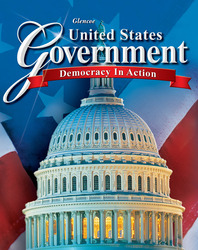
United States Government: Democracy in ActionChapter 4: The Federal SystemChapter Overviews[logo] Essential Question Section 1 National and State Powers Any powers not given to the national government are reserved to the states. These include establishing local government systems, protecting state residents' health and welfare, administering elections, and regulating intrastate commerce. The federal government and the states have certain concurrent powers, such as the power to tax, to maintain courts, and to define crimes. The Constitution also denies some powers to all levels of government. The Constitution obliges the national government to guarantee three things for the states: a republican form of government, protection against invasion and domestic violence, and respect for the territorial boundaries of each state. Congress admits new states to the Union, and it and the president may impose conditions for admission. The governors of each state try to influence national policies that affect state budgets. Because federalism divides the powers of government, conflicts often arise between national and state governments. The federal court system acts as an umpire in these disputes. Section 2 Relations Among the States The Constitution requires the states to settle their differences peacefully. Interstate compacts approved by Congress help settle disagreements. States that are unable to negotiate compacts can sue in the U.S. Supreme Court. Section 3 Developing Federalism The expansion of the national government has come at the expense of the states. The adaptability of the Constitution has allowed the Supreme Court, Congress, and the president to stretch federal war, commerce, and taxing powers to meet the needs of a modern industrial nation. Congress provides federal grants of money to the states and also requires state and local governments to follow certain policies. Even so, the power balance between the national government and the states evolves in response to new issues and new administrations. Section 4 Federalism and Politics Federalism makes it possible for different political parties to be victorious in state, local, and federal elections. It also increases opportunities for Americans to participate in politics—whether running for a local office, lobbying the state government, or campaigning for a national candidate. Government policies at the federal level are influenced by the technical expertise of government bureaucrats, or "technocrats." Each state has considerable freedom in arranging its own internal affairs. Some states regulate business and industry, and some concentrate resources on health services. Some states have stricter criminal laws, and some have higher taxes. When people cross a state boundary, they become members of a different political system with its own officials, taxes, and laws. |  |















